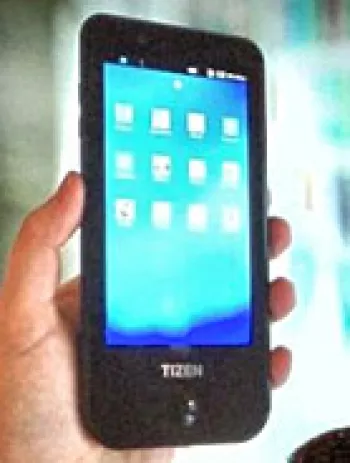
Overview of Samsung Galaxy Gear
The Samsung Galaxy Gear is a smartwatch that was first announced and released in September 2013. As one of the early entries in the smartwatch market, the Galaxy Gear aimed to blend style and functionality, offering features that extended beyond traditional timekeeping. Although it has now been discontinued, understanding its specifications and features provides insight into the progress of wearable technology.
Design and Build
The Samsung Galaxy Gear features a sleek and modern design, with dimensions of 56.6 x 36.8 x 11.1 mm and a weight of 73.8 grams, making it light and comfortable to wear. Constructed with a mix of high-quality materials, the device was available in various colors including Jet Black, Lime Green, Mocha Gray, Oatmeal Beige, Rose Gold, and Wild Orange. Although it doesn't support SIM cards, its design effectively balances style and technology.
Display Features
Equipped with a 1.63-inch Super AMOLED display, the Galaxy Gear offers a resolution of 320 x 320 pixels, achieving approximately 278 ppi pixel density. This provides vivid colors and sharp images, enhancing the user experience. Its touchscreen functionality allows users to navigate through apps and notifications easily.
Performance and Operating System
The Samsung Galaxy Gear is powered by an Exynos chipset with an 800 MHz CPU. Despite being an early smartwatch, its performance was adequate for running its Tizen OS. With 512MB of RAM, it manages basic functions and apps smoothly. The lack of expandable memory is mitigated by the device’s 4GB internal storage, sufficient for the average user's requirements.
Camera Capabilities
Uniquely featuring a 1.9 MP autofocus camera, the Galaxy Gear allows users to capture images and record 720p videos directly from their wrist. Although this isn't comparable to standalone camera devices, it adds convenience for quick, impromptu captures without the need to reach for a smartphone.
Connectivity Options
The device focuses primarily on wireless connectivity. It includes Bluetooth 4.0, which allows the Galaxy Gear to connect seamlessly with compatible Samsung smartphones, facilitating notifications, calls, and media control. Other connectivity options are limited; there is no NFC, WLAN, USB, or radio features in this device, which may be a consideration for some users.
Sensors and Additional Features
With built-in accelerometer and gyroscope sensors, the Samsung Galaxy Gear enhances its functionality with activity tracking capabilities. These sensors enable features such as step counting and gesture control. However, the device lacks some of the advanced health-tracking features found in more modern wearables.
Battery Life
The Galaxy Gear is powered by a non-removable 315 mAh Li-Ion battery. Designed to sustain the device through a typical day, it reflects the device's efficiency. Given its technology period, this battery life was considered standard, though it requires daily charging for active users.
Market Impact and Legacy
The Samsung Galaxy Gear was a pioneer in the smartwatch segment, offering users a glimpse into the future of wearable technology. Despite its discontinuation, it laid a foundation for future Samsung wearables, influencing subsequent designs and functionalities. Its initial pricing was about 270 EUR, aligning with its premium build and capabilities at the time.
In Retrospective
Although surpassed by more advanced models, the Samsung Galaxy Gear remains a significant milestone in wearable technology history. It illustrated both the potential and challenges of integrating smart features into everyday wearable devices. Those interested in the evolution of smartwatches can look back at the Galaxy Gear as a stepping-stone towards today's sophisticated wearable technology.
Key Features of Samsung Galaxy Gear
- Super AMOLED Display: Offers vibrant colors and deep contrasts
- Compact Size: 1.63 inches for convenient wrist wear
- Decent Resolution: 320 x 320 pixels (~278 ppi density)
- Tizen OS: Provides a smooth user interface experience
- Exynos Chipset: Reliable performance with an 800 MHz CPU
- Camera: 1.9 MP with autofocus capable of capturing 720p videos
- Bluetooth 4.0 with LE support: For efficient connectivity
- Built-in Sensors: Includes accelerometer and gyro for various functionalities
- Lightweight Design: Weighs 73.8 g, making it comfortable to wear
- Multiple Color Options: Available in Jet Black, Lime Green, Mocha Gray, Oatmeal Beige, Rose Gold, and Wild Orange
Disadvantages of Samsung Galaxy Gear
- No cellular connectivity; cannot make phone calls independently
- No GPS for location tracking
- Lacks Wi-Fi connectivity
- No headphone jack for audio output
- No NFC or radio support
- Limited internal storage with no card slot for expansion
- Non-removable battery with limited capacity (315 mAh)
- Discontinued status means no longer officially supported or updated
- Relatively low-resolution camera (1.9 MP) and no selfie camera


View Also
More Phones
All Rights Reserved +14266 Phones © Mobilawy 2025

























